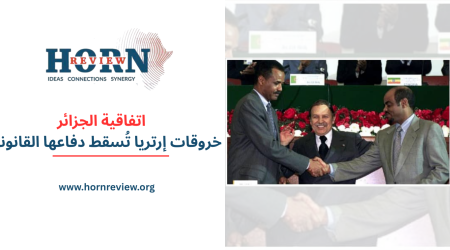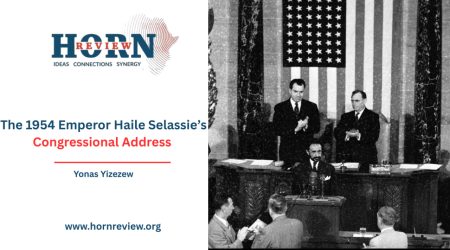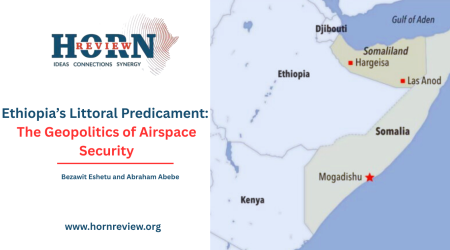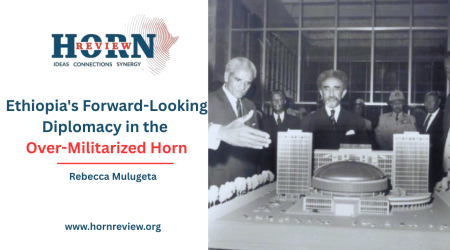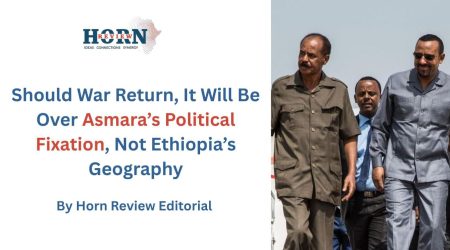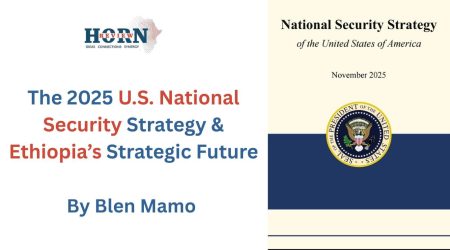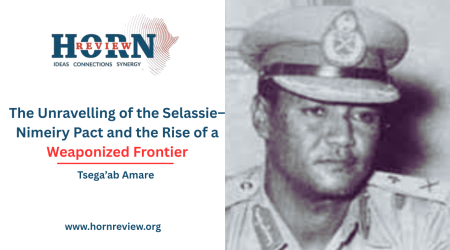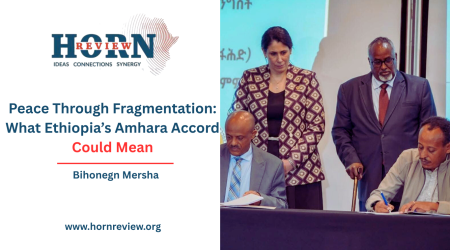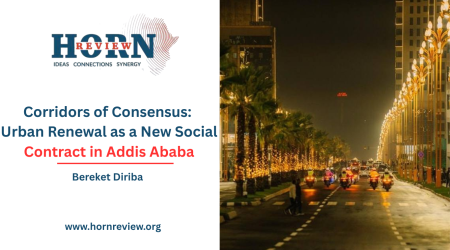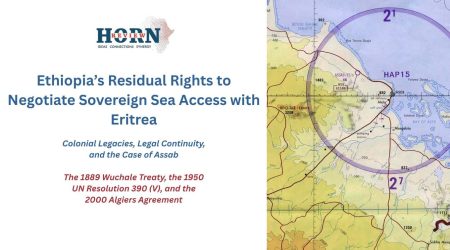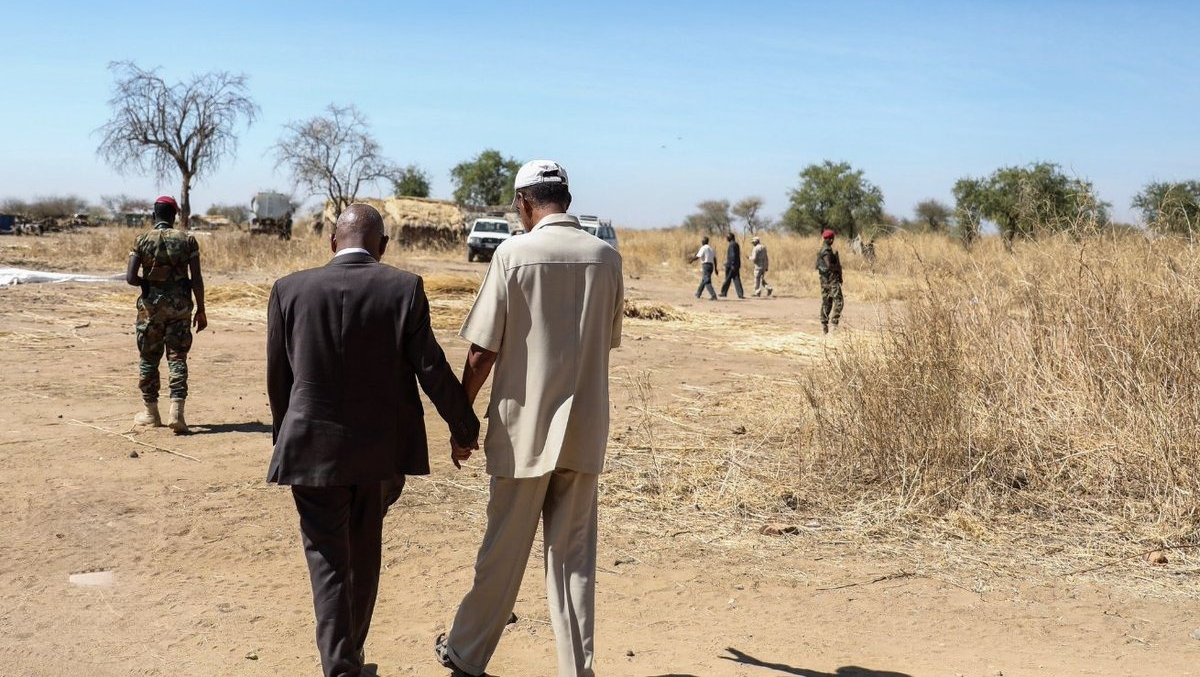
2
Oct
Debretsion’s TPLF Faction: Eritrea’s New Proxy Front
How TPLF Leaders with Eritrean Heritage are reverting back to thier EPLF Roots, but at the Expense of Ordinary ethnic Tigrayans
In the complex aftermath of the Pretoria Agreement, the dynamics of Ethiopia’s northern periphery continue to take on new layers of ambiguity. If the concept of “undefined relationships” illuminates the political disorder within post-conflict Tigray, a complementary lens is required to grasp the external currents shaping the region’s fragility. Central to this is Eritrea’s evolving proxy strategy, a doctrine that blends tactical patience with opportunistic interference, and which, according to recent remarks by former Interim President of Tigray, Getachew Reda, is now being strategically projected southwards into Ethiopian politics.
While Eritrea has historically lacked the demographic and military depth to wage sustained conventional war against its larger neighbour, its leadership has cultivated alternative methods of destabilization. President Isaias Afwerki has long relied upon proxies and indirect engagements to unsettle adversaries, a pattern extending from Somalia to Sudan and, most persistently, Ethiopia. Getachew’s observations expose that Asmara, acutely aware of its limitations, has sought to destabilize Ethiopia by instrumentalizing disaffected actors within its borders, be they in Tigray, Amhara, or elsewhere, thereby exporting conflict while insulating itself from direct confrontation.
The testimony of Getachew, who presided over Tigray’s interim authority at a moment of acute transition, offers a rare insider’s perspective. He characterizes Eritrea’s current approach as one of calculated manipulation, wherein actors inside Ethiopia are encouraged to fight wars that Asmara cannot wage openly. This account dovetails with reports of Eritrean logistical and political support to armed factions in Amhara, particularly the Fano militias, whose fragmented insurgency continues to create instability. At the same time, the emerging relationships between TPLF hardliners and Eritrean officials lends further credence that Asmara’s strategy rests upon widening Ethiopia’s fractures and rendering them unmanageable.
The implications of these entanglements are profound. Tigray’s political environment, already weakened by overlapping authorities and contested legitimacy, is especially vulnerable to outside manipulation. The Interim Regional Administration, set up to consolidate peace, has instead been reduced to “the role of protégé”, caught between the legacies of the TPLF’s hierarchical traditions and the uncertainties of the Pretoria Agreement. Getachew’s account of a TPLF steeped in “totalitarian control” and resistant to self-criticism resonates with the broader concern that the party, even in its diminished state, remains capable of conspiring with external actors. The convergence of Eritrea’s strategic opportunism with the TPLF’s destructive reflexes risks transforming Tigray into a staging ground for indirect confrontation.
The internal divisions within the TPLF further complicate this picture. The TDF, the armed wing of the party that fought the Ethiopian National Defence Forces, is itself divided. Armed groups have emerged against the old guard, resisting both its authoritarian habits and its flirtation with Asmara. These splits reflect a broader contestation within Tigray: one faction seeks to align with Eritrea in order to force the federal government’s hand, convinced that Pretoria was a defeat, while other forces mobilize against such an “unholy marriage,” determined to prevent an irreversible TPLF–Asmara axis from taking root. The divisions also take on an economic layer, intertwined with illicit networks, gold smuggling, human trafficking, and control over Tigray’s resources that link local armed groups to broader patronage systems.
Equally troubling is the revisionist discourse emerging among some TPLF figures, who now portray Eritreans as “brothers,” downplaying the alleged atrocities inflicted upon Tigray by Eritrean forces during the conflict. For Eritrea, such shifts are convenient: they provide a veneer of legitimacy to an otherwise improbable partnership, allowing Asmara to cultivate influence within Tigray while maintaining plausible deniability. This new and unthinkable unholy alliance positions the TPLF as both buffer and proxy base, a role central to Asmara’s strategic thinking.
The Pretoria Agreement, celebrated by some as a landmark in halting the carnage of the conflict, has since appeared increasingly fragile in practice. Although it secured a cessation of hostilities, its provisions remain only partially implemented: internally displaced persons remain in limbo, demobilization is contested, and Eritrean withdrawal remains incomplete.
For Eritrea, Pretoria was never sufficient; Isaias had made clear his expectation that the TPLF be dismantled entirely. That the accord instead preserved elements of its leadership was viewed in Asmara as a betrayal, prompting efforts to ensure that Ethiopia’s peace would remain tenuous. The result is a peace that feels less like a resolution than a pause, haunted by the spectre of proxy violence.
This fragility is exacerbated by a post-conflict environment riddled with complex problems. Internally displaced persons, unresolved territorial contestation with Amhara, and the fault lines of Pretoria itself have created an unstable landscape. The agreement, by placing the TPLF on equal footing with the federal government in overseeing the Interim Administration, generated overlapping authorities and fostered a climate of disorder. The Interim Administration, from the outset, risked being over-influenced by the TPLF; today, that scenario has hardened into fact. At the lower levels of administration, institutional mechanisms overlap as well, with governance structures serving the economic and political agendas of countless emerging interest groups, many of which are in conflict with each other. Tigray has thus become highly politicized, with competing actors vying for influence in a fragmented arena.
Asmara’s strategy is layered atop these divisions. Eritrean forces still hold portions of Tigray’s borderlands, where the “Tsmdo” propaganda strategy is deployed to manufacture consent for Eritrea’s intervention. This approach seeks to normalize Eritrea’s presence, capitalizing on local grievances to weave proxy networks. The Afar frontier itself is increasingly used as a theatre for Eritrean agitation. In reaction, hosted within Afar are rebel groups opposed to the Eritrean regime, aiming to “free” Afari populations under Eritrean rule along the Red Sea coast. Addis Ababa, it seems, has given space to these groups as a counter-proxy, signalling a defensive strategy aimed at shielding against future incursions.
Beyond Tigray and Afar, Eritrea has widened its network of proxy relationships. Support for Fano militias in Amhara demonstrates Asmara’s willingness to back groups intent on undermining federal authority. The same “undefined” ties are stretching into Tigray-Amhara relations, where fluid alliances serve Eritrea’s long-standing objective to embroil Ethiopia in internal instability. Further afield, Asmara has deepened its ties with Egypt and Somalia. Alarmed by Addis Ababa’s overtures toward the sea, Eritrea had entered a tripartite alliance with Cairo and Mogadishu, both to hedge against Ethiopia’s moves and to secure logistical and diplomatic support for its proxy strategy. Egypt, in particular, emerges as a critical actor. In the event of open conflict, Cairo’s role would extend beyond diplomacy to logistics, cyberwarfare, and propaganda operations, sustaining Asmara’s networks and amplifying Ethiopia’s vulnerabilities.
At the heart of these entanglements lies Asmara’s calculus. Getachew underscores that Eritrea’s initial intent was to see the TPLF eliminated, an outcome Pretoria prevented. Since then, relations between Addis Ababa and Asmara have deteriorated, sharpened by Ethiopia’s sea-access question and by Eritrea’s perception of Addis Ababa as a direct threat. For Isaias, Ethiopia’s instability has become a strategic imperative, a buffer against direct confrontation with the Ethiopian National Defence Forces, which Eritrea cannot match in conventional terms. The “unholy alliance” with TPLF hardliners thus makes sense in Asmara’s logic. The rationale is to embroil the federal government in civil conflict, weaken its coherence, and sabotage the path to a consolidated Ethiopian peace.
At the heart of Getachew’s warning is the recognition that renewed fighting would not be borne equally. “Another round of conflict,” he cautions, “whether it involved the Eritreans or the Ethiopian federal government, would be a nightmare scenario for Tigray.” Such a scenario would again place civilians at the epicentre of suffering, repeating the devastation of the recent conflict. The re-militarization of Tigray, with its large pool of fighters and commanders now navigating uncertain loyalties, heightens the risk of externally sponsored confrontations taking shape.
In many respects, the dynamics unfolding today are not anomalies but continuations of unresolved questions left by both the conflict and the Pretoria settlement. The fundamental tension between the TPLF’s totalitarian reflexes and the reach of federal authority remains unsettled; the role of the party in the administration of Tigray remains contested; and Eritrea’s enduring hostility towards a consolidated Ethiopia remains undiminished.
Moving forward, the challenge is twofold. Domestically, Ethiopia must reinforce the credibility of the transitional mechanisms in Tigray, ensuring that governance is oriented toward constitutional oversight rather than party dominance. Externally, sustained vigilance is required to deter Eritrea’s proxy incursions, whether through diplomatic pressure, regional coalitions, or international monitoring. Failure to address either dimension risks perpetuating a cycle in which ambiguity becomes weaponized, and peace remains little more than an interlude between conflicts.
Getachew’s testimony recounts the failures of leadership and the perils of authoritarian tradition. It situates Tigray within a larger regional struggle, one in which Eritrea’s proxy strategy looms as a central destabilizing force. If “undefined relationships” capture the disorder of Tigray’s internal politics, then the “unholy alliance” of TPLF hardliners and Eritrea exposes the external pressures that threaten to ignite a conflict.
By Mahder Nesibu, Researcher, Horn Review
This analysis draws significantly on remarks made by Getachew Reda in an interview with Jim Stenman, host of Global Power Shifts. – https://youtu.be/Iqb6daNGVpM?si=cUKv71hLAQzn8UOv

